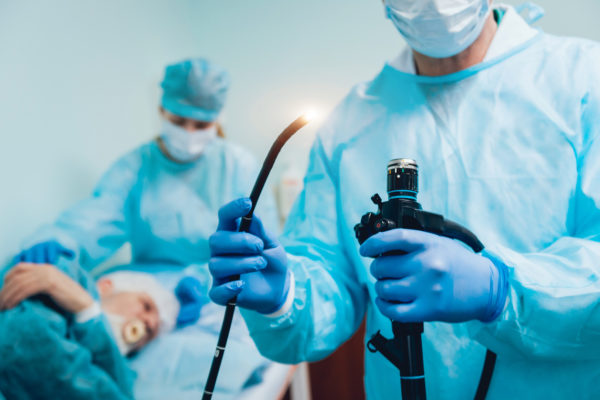When it comes to examining your gastrointestinal (GI) tract, there are several procedures that doctors may recommend. Two common procedures are small bowel enteroscopy and colonoscopy. While both procedures involve the use of an endoscope to visualize the inside of your intestines, they serve different purposes and target different areas of the GI tract.
In this blog, we will discuss the main differences between these two procedures, and provide you with the information you need to understand their distinct purposes.
Small Bowel Enteroscopy: What Is It and What Is Its Purpose?
A small bowel enteroscopy is a nonsurgical procedure used to examine the lining of the small intestine, also called the small bowel. The small intestine is responsible for digesting and absorbing nutrients from the food you eat, and it stretches from the stomach to the large intestine (colon). An enteroscopy can assess the entire length of the small bowel and allows your healthcare provider to diagnose certain conditions without the need for surgery.
During a small bowel enteroscopy, the doctor uses a long, flexible endoscope equipped with a camera and a light. As the endoscope travels along the bowel, it sends images of the small intestine on to a screen. There are two types of enteroscopy procedures:
- Lower enteroscopy – involves inserting the endoscope through the anus and rectum (to advance upward).
- Upper enteroscopy – involves inserting the endoscope through the mouth and throat (to advance downward).
When Is a Small Bowel Enteroscopy Necessary?
A small bowel enteroscopy allows the doctor to identify and diagnose a variety of issues or abnormalities in the small bowel. They may recommend an enteroscopy if you have:
- Inflammation or abnormal bleeding (from the GI tract)
- A suspected obstruction in the small bowel
- Abnormal test results, such as a high white blood cell count
- Unexplained symptoms, such as malnutrition or severe diarrhea
- A potential tumor
An enteroscopy procedure may also be used to:
- Take a biopsy (a procedure to take a sample of cells or tissue for evaluation)
- Seal/cauterize bleeding on the lining of the small intestine, such as a lesion
- Widen an abnormally narrow area in the bowel
- Remove an abnormality, such as a polyp or mass, or a foreign object
Colonoscopy: A Closer Look at the Large Intestine
A colonoscopy, on the other hand, is a procedure used to examine the inside of the large intestine, or colon, including the anus and rectum. The colon plays a critical role in absorbing water and electrolytes to form and expel feces from the body.
In this procedure, the doctor inserts a flexible endoscope, called a colonoscope, into the rectum and advances it through the entire large intestine. As it travels along the inside of the colon, it allows the doctor to view images of the large intestine on a screen.
Colonoscopies are typically performed to:
- Screen for colon cancer (routine colonoscopies are typically recommend for adults age 45 and over)
- Investigate the cause of symptoms, such as abdominal pain, bleeding, or discharge
- Investigate unexplained changes in bowel habits, such as incontinence, diarrhea, or constipation
- Explore unexplained weight loss or poor weight gain in children
- Diagnose gastrointestinal diseases, such as Crohn’s disease, ulcerative colitis, or other inflammatory bowel diseases, and conditions such as polyps and bowel obstructions
Key Differences Between Small Bowel Enteroscopy and Colonoscopy
Despite both procedures involving the use of endoscopes, there are a few key differences between small bowel enteroscopy and colonoscopy:
- Targeted area: The main difference lies in the area of the GI tract being examined. A small bowel enteroscopy focuses on the small intestine, whereas a colonoscopy examines the large intestine, rectum, and anus.
- Preparation: Preparation for a colonoscopy typically involves a bowel cleanse, where patients are required to follow a specific diet and take laxatives to ensure a clear view of the colon. Depending on the type of small bowel enteroscopy procedure you have, it may require only fasting for a certain period before the procedure (for an upper enteroscopy).
- Procedure duration: Colonoscopies generally take about 30-45 minutes, whereas small bowel enteroscopy may take much longer due to the length and position of the small intestine (up to 2 hours).
Both procedures usually involve sedation, but the level of sedation may vary. Depending on the type of procedure and the specific technique used, it may require moderate to deep sedation or general anesthesia.
In summary, a small bowel enteroscopy and a colonoscopy are two different procedures with distinct purposes. While both use endoscopes to visualize the inside of the GI tract, they target different areas and serve different functions. It’s important to understand these differences, so you can be prepared for the procedure and discuss any concerns or questions with your doctor.
If you are due to have a procedure, such as an enteroscopy or colonoscopy, remember to always follow your doctor’s recommendations and instructions for preparation and aftercare, as these procedures can provide important information about your gut health and overall well-being. If you have any further questions or concerns, don’t hesitate to reach out to your healthcare provider.
Small Bowel Enteroscopy Near Me in California
If you are experiencing symptoms associated with a GI condition or require a small bowel enteroscopy, colonoscopy, or other gastroenterology procedure, contact Genensis Healthcare Partners. With over 20 locations to serve you, we are the largest gastroenterology physician group in California.
Our board-certified gastroenterology specialists provide comprehensive care for a wide range of common, chronic, and complex gastrointestinal and liver conditions, including intestinal bleeding, diverticulosis, chronic abdominal pain, celiac disease, and much more.
To learn more about our gastroenterology services or to book a consultation with an enteroscopy expert, such as Dr Alaa Abousaif located in Orange, CA, please call us today at the location nearest you. You can also use our convenient secure online appointment request form.

